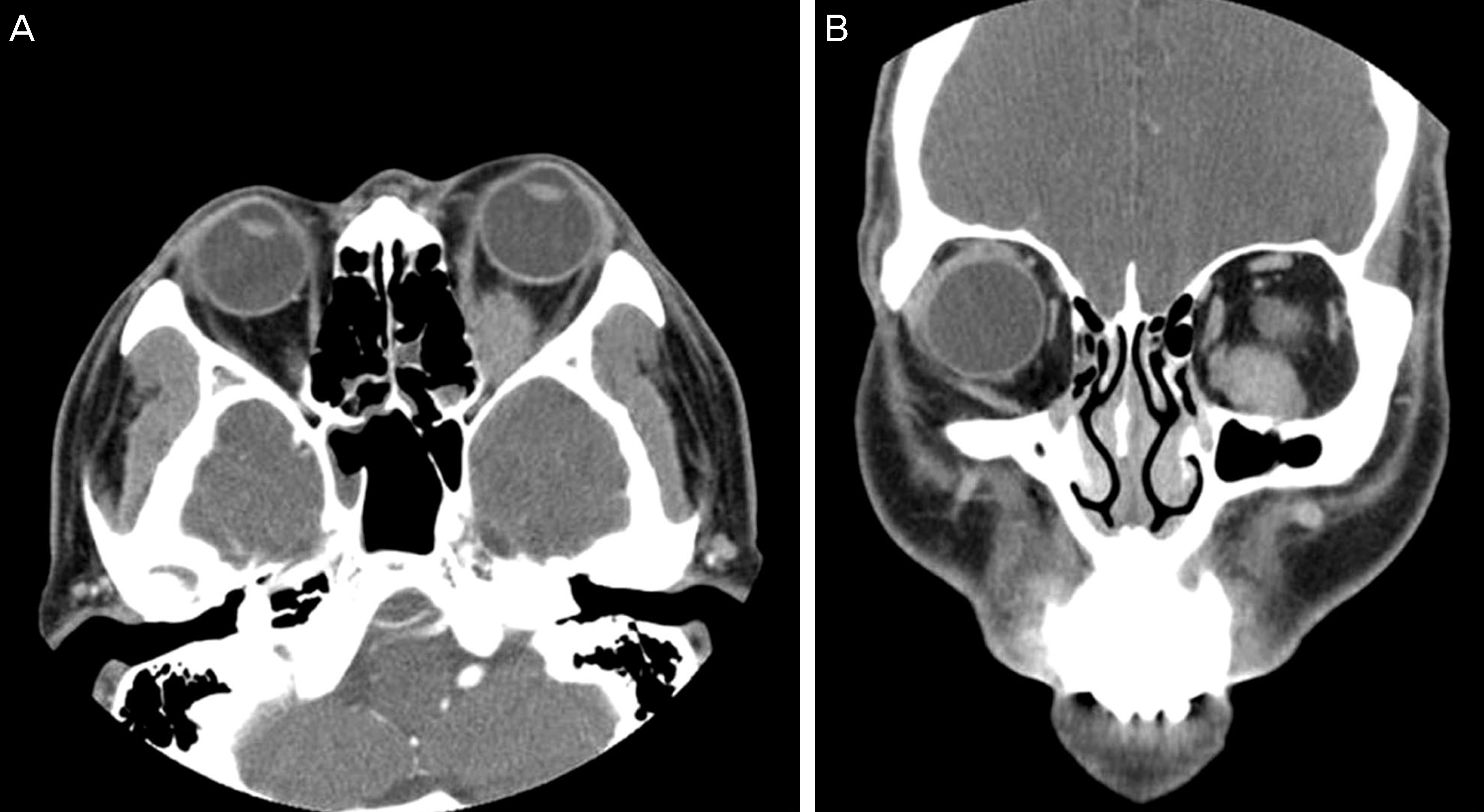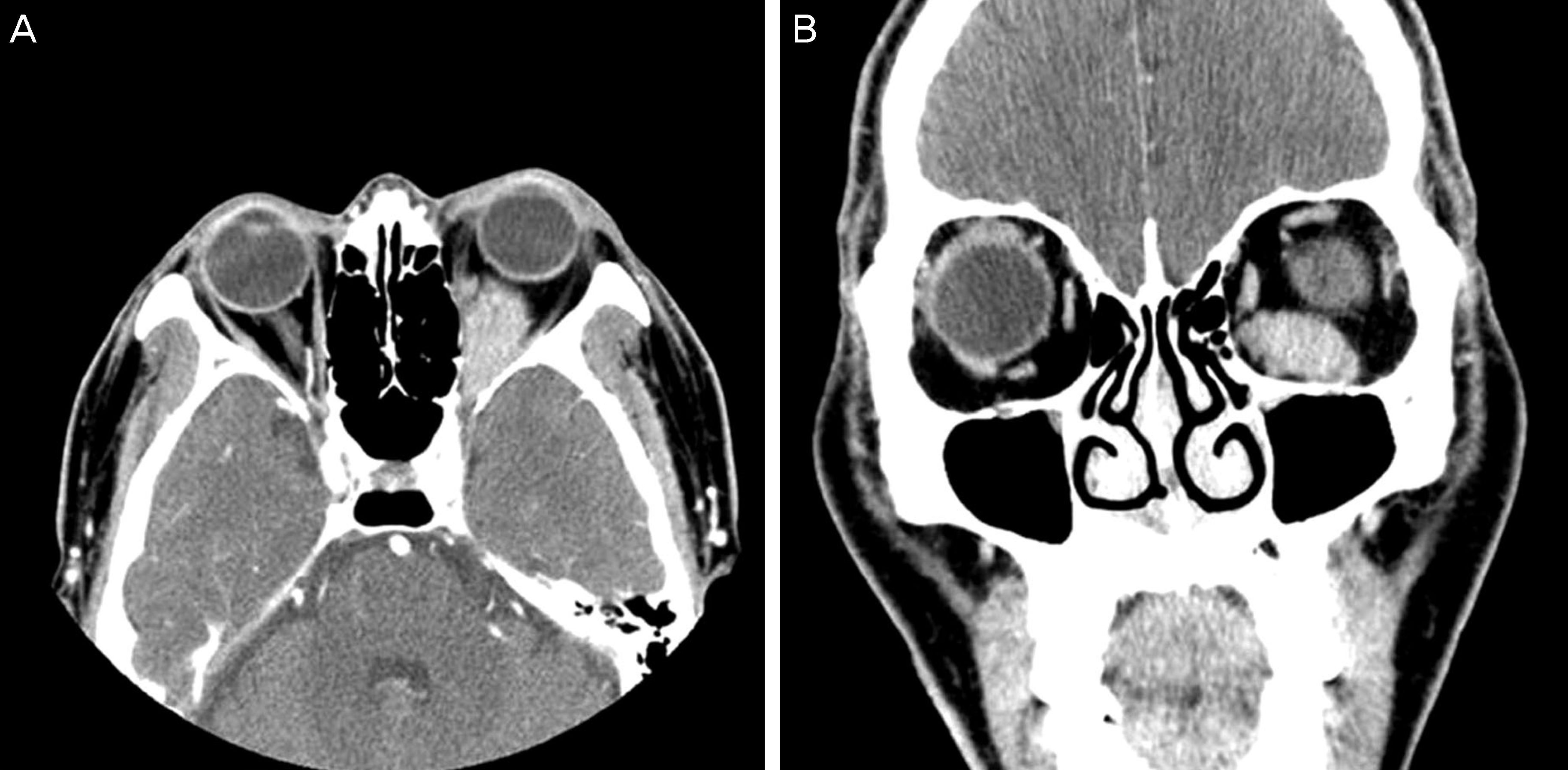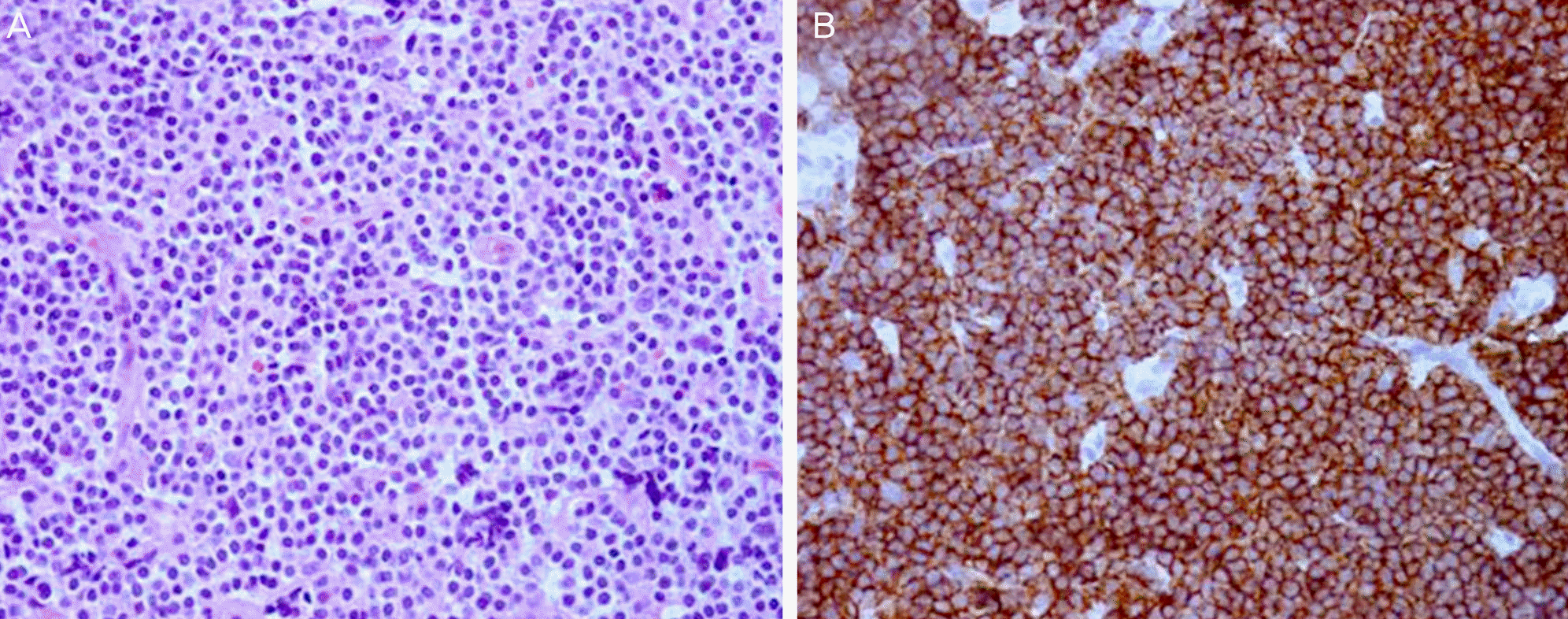Abstract
Purpose
To report an unusual case of mucosa-associated lymphoid tissue (MALT) lymphoma localized to the left inferior rectus muscle.
Case summary
A 52-year-old male presented with double vision 6 months in duration, which was exacerbated in the down-gaze. On initial examination, 6 and 30 prism diopters (PDs) of left hypertropia were observed in primary gaze and down gaze, respectively. Prominently limited infraduction was also observed in his left eye. Computed tomography (CT) revealed contrast enhancing mass on the left inferior rectus muscle. He was diagnosed with suspicious orbital pseudotumor and treated with systemic steroid for 2 months. Double vision and limited infraduction was improved and the mass size was decreased on CT. After 21 months, the patient revisited the clinic with the same symptoms. In the down-gaze, 35 PDs of hypertropia were observed in his left eye along with limited infraduction. CT revealed an enlarged mass and left superior rectus muscle recession along with an incisional biopsy of the left inferior rectus muscle were performed. Infiltration by small lymphoid cells was detected with hema-toxylin-eosin and immunohistochemical stainings. Subsequently, the patient was diagnosed with MALT lymphoma localized to the left inferior rectus muscle.
Conclusions
This is the first description of MALT lymphoma with inferior rectus muscle invasion in a Korean patient. In a patient with strabismus and limited duction, the possibility of extraocular muscle tumor including lymphoma should be considered. Homogenously contrast-enhanced mass on orbit CT can help in to make a diagnosing extraocular muscle lymphoma.
References
1. Keleit D, Flickinger JC, Hobson SR, Mittal BB. Radiotherapy of lymphoproliferative disease of the orbit. Am J Clin Oncol. 1992; 15:422–7.
2. Freeman C, Berg JW, Cutler SJ. Occurrence and prognosis of ex-tranodal lymphomas. Cancer. 1972; 29:252–60.

3. Cho EY, Han JJ, Ree HJ, et al. Clinicopathologic analysis of ocular adnexal lymphomas: extranodal marginal zone b-cell lymphoma constitutes the vast majority of ocular lymphomas among Koreans and affects younger patients. Am J Hematol. 2003; 73:87–96.

4. Ferry JA, Fung CY, Zukerberg L, et al. Lymphoma of the ocular ad-nexa: A study of 353 cases. Am J Surg Pathol. 2007; 31:170–84.

5. Abalo-Lojo JM, Baleato-Gonzalez S, Abdulkader I, Gonzalez F. Extraocular muscle involvement in MALT lymphomas. Orbit. 2011; 30:186–8.

Figure 1.
Initial computed tomography revealed 4.0 × 2.0 cm sized homogenously enhancing mass which involving left inferior rectus muscle. (A) Axial view. (B) Coronal view.

Figure 2.
Preoperative computed tomograph revealed 2.4 × 2.2 × 2.9 cm sized homogenously enhancing mass which involving left inferior rectus muscle. (A) Axial view. (B) Coronal view.

Figure 3.
Preoperative external 9 gaze photograph showing left hypertropia in primary gaze and down gaze along with limited in-fraduction in the left eye.

Figure 4.
Results of Hematoxylin-Eosin staining (H-E) and Immunohistochemical staining (IHC). (A) The cells appear moderate amounts of pale cytoplasm, irregular nuclear contours, and dispersed chromatin resembling monocytoid B-cells (H-E, × 400). (B) The neoplastic cells express diffusely and strongly the B-cell marker CD20 (IHC, × 400).





 PDF
PDF ePub
ePub Citation
Citation Print
Print


 XML Download
XML Download